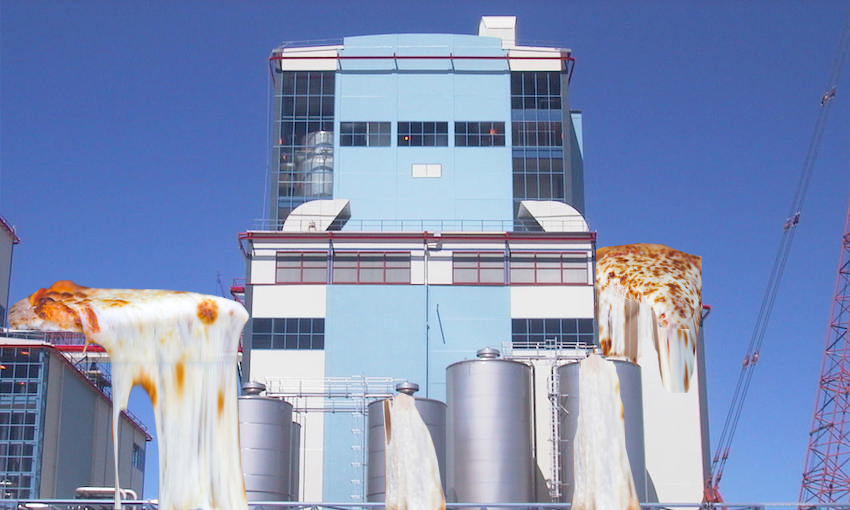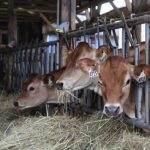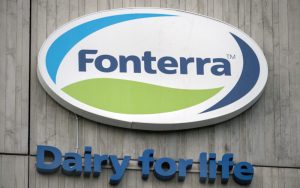
Fonterra once called it “the single largest foodservice investment in New Zealand’s dairy industry”.
Now its $240 million mozzarella cheese plant at Clandeboye near Temuka is sitting close to idle thanks to lack of demand.
The Clandeboye dairy factory’s third line making Fonterra’s “secret recipe” mozzarella was opened to much fanfare a year ago, with the co-operative claiming it was able to produce enough of the cheese to top half a billion pizzas a year.
Fonterra has described the cheese as “the jewel in its foodservice crown”. Scientists at its Palmerston North Research and Development Centre found a way to make mozzarella in hours, rather than the months it takes to make the cheese traditionally. The cheese was already topping half of the pizzas in the fast-growing Chinese market, and the new Clandeboye plant had been constructed to meet demand, the co-operative said last year.
But this week Fonterra conceded ‘Mozz 3’, as it’s known, has been running at just 25% capacity since the start of the milk season on June 1 because demand for the mozzarella has not been as high as initially forecast.
Ads Hendriks, the Federated Farmers Dairy Industry representative for South Canterbury, says he first became aware that Mozz 3 was not operating as hoped at an open day at Clandeboye earlier in the year.
“What I understood is they overestimated, probably, that market segment at this stage. It’s not exactly wonderful planning if you make these big investments, but what can you do as a farmer? There have been a few silly investments.”
The dairy industry is about to hit peak milk season, and Hendriks understands Fonterra will start firing up the plant to get rid of the milk. “There will be quite a bit of mozzarella where there’s probably not yet the market, so it’s a little bit of a concerning thing.”
Dairy farmers have good reason to be disappointed in Fonterra’s performance. Last week the company announced it had made a net loss after tax of $605m for 2019 – its second-ever loss after the $196m in red ink it delivered last year. The loss was largely due to a $826m revaluation southwards of its businesses, and came with an admission that it had got too big for its boots in trying to be a global player.
Agricultural economist Peter Fraser says capacity utilisation in the dairy industry is important because of the high fixed costs of the plant, and normally Fonterra is good at it.
Foodservice products like mozzarella are sold to particular customers on a business-to-business basis. “You don’t just build something and then hope people will turn up and buy,” Fraser says. “Fonterra’s really good at customising the product just to what the business actually needs. When they’ve built a brand new plant like that it kind of suggests something’s gone wrong somewhere.”
Of course farmers are concerned, says Michelle Pye, the Southern Canterbury representative on the Fonterra Shareholders Council. They had been aware about the under-utilisation of the third mozzarella line and had asked numerous times what was going on. “It was raised at a recent meeting in Ashburton where we were given a clear answer about volumes and expectations, which went a long way to allay farmers’ frustrations and help farmers understand the realities of business.
“You need to build capacity before building demand and the plant was never built on the basis of it operating at full capacity in the first few years,” she says.
Fonterra’s director of New Zealand manufacturing, Alan Van Der Nagel, says demand for its mozzarella is continuing to grow, and without the third plant at Clandeboye it would have been supply-constrained and missing out on profitable sales.
“We are expecting significant quick service restaurant demand to come on stream out of Mozz 3 during the next six months,” he says.
Fonterra CEO Miles Hurrell did not refer to mozzarella or Clandeboye specifically at the annual results announcement last week, but said while margins in its foodservice business were up, sales volumes were down.
The co-operative has announced a whole new strategy which sees it turning away from trying to be a global player, focusing instead on producing top quality dairy ingredients and foodservice products.
It will create new opportunities in foodservice, including developing markets particularly in Asia Pacific, the CEO said.
“This focus on dairy ingredients and foodservice will see us playing to our strengths and driving more value from the parts of our business that consistently perform,” Hurrell said.





















